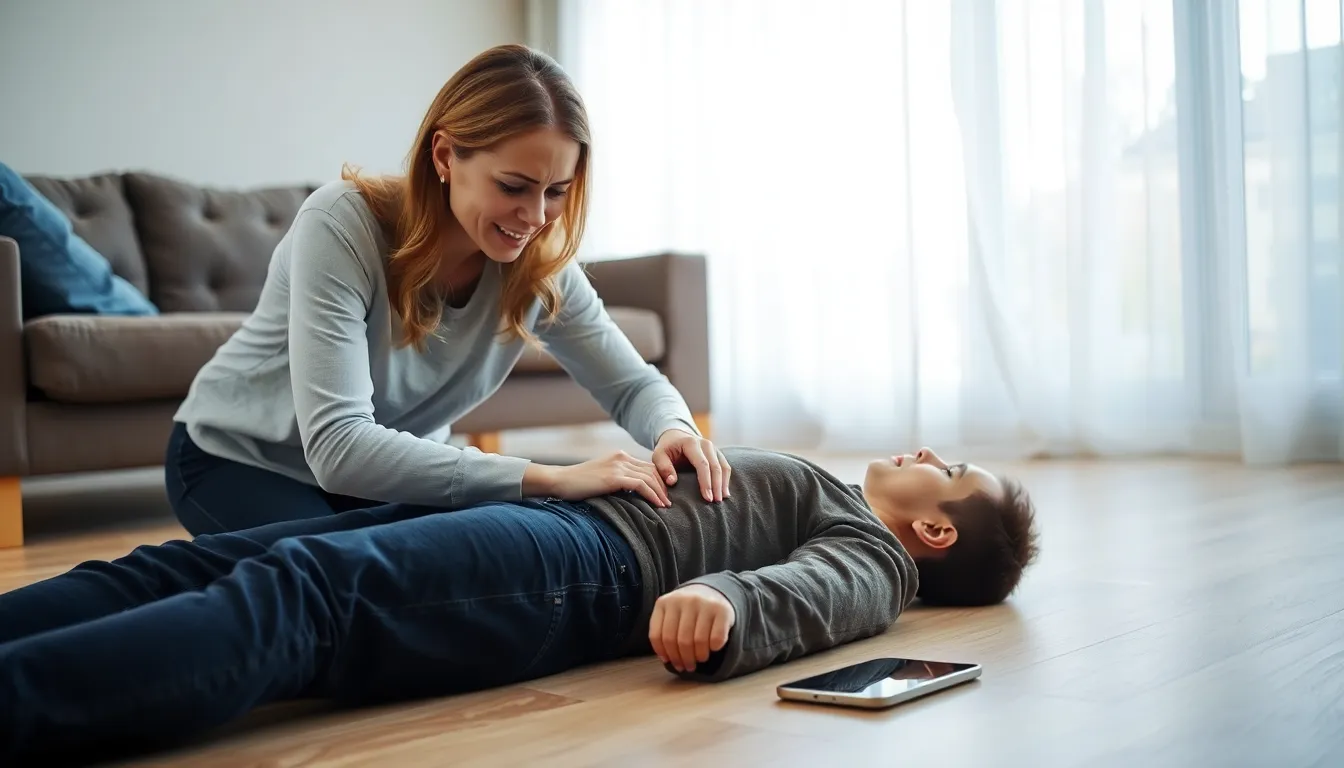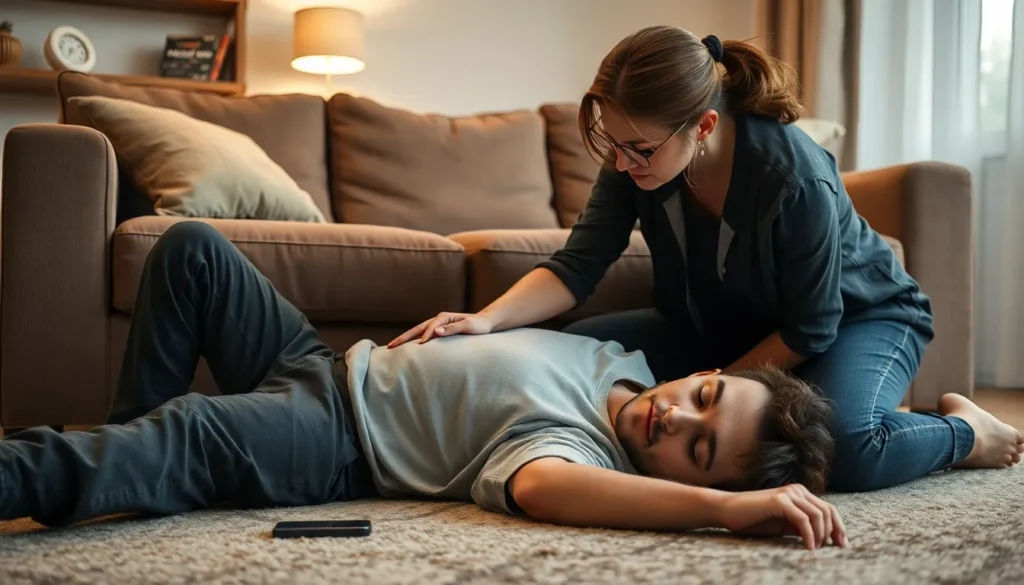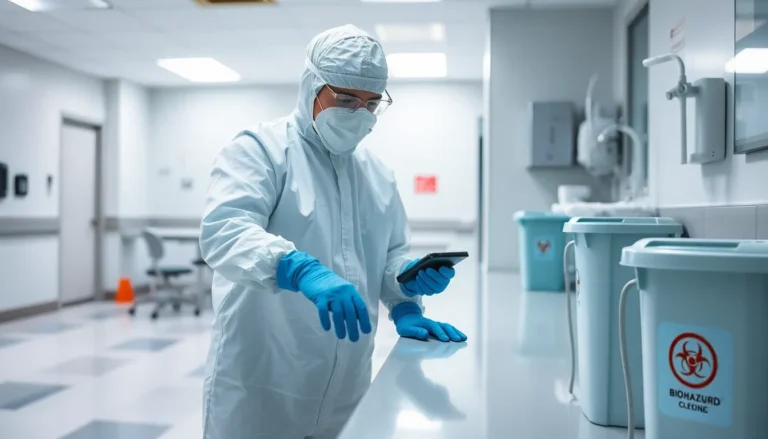An overdose can be a frightening experience, whether it involves prescription medications, over-the-counter drugs, or recreational substances. In critical moments, knowing how to respond can make all the difference. While professional medical help is always the safest route, understanding basic home treatment options can empower individuals to act swiftly and effectively.
Recognizing the signs of an overdose is crucial. Symptoms can vary widely, from extreme drowsiness and confusion to difficulty breathing. This article will explore essential steps for managing an overdose at home, including when to seek emergency assistance and how to provide immediate care. With the right knowledge, individuals can navigate these challenging situations with confidence.
Table of Contents
ToggleUnderstanding Overdose
Overdose occurs when an individual takes an excessive amount of a substance, leading to harmful effects. Recognizing the types of overdoses and their symptoms serves as a critical component of effective response strategies.
Types of Overdoses
- Opioid Overdose: Characterized by substances like morphine, heroin, and prescription painkillers. This type can cause respiratory failure and unconsciousness.
- Alcohol Overdose: Excessive consumption of alcoholic beverages leads to confusion, vomiting, and possible coma.
- Stimulant Overdose: Involves drugs like cocaine and methamphetamine, resulting in increased heart rate, anxiety, and seizures.
- Sedative Overdose: Medications such as benzodiazepines can slow down breathing and impair coordination, leading to unconsciousness.
- Over-the-Counter Medication Overdose: Common medications like acetaminophen can cause liver damage when taken in large amounts.
Common Symptoms
- Extreme Drowsiness: The individual may exhibit a profound lack of energy, appearing almost impossible to awaken.
- Confusion: Disorientation and inability to respond to questions characterize this symptom.
- Difficulty Breathing: Gasping for breath or irregular breathing patterns may occur, requiring immediate attention.
- Nausea and Vomiting: These symptoms can signal an overdose, especially when combined with loss of consciousness.
- Seizures: Sudden convulsions can arise, indicating a severe reaction to the substance.
- Pale or Cold Skin: A noticeable change in skin color or temperature may indicate danger.
Immediate Actions to Take

In an overdose situation, acting quickly can make a crucial difference. Following specific steps ensures the best possible outcome.
Call for Help
Calling 911 or your local emergency number is vital if an overdose occurs. Providing the dispatcher with clear information about the situation, including the substance involved and the person’s condition, aids in timely assistance. If someone is unresponsive or not breathing, specify these symptoms to prioritize help. Don’t hesitate to ask for guidance while waiting for emergency services to arrive.
Assessing the Situation
Assessing the individual’s condition is essential for effective treatment. Checking for responsiveness involves gently shaking the person and asking questions. Observe their breathing pattern; loud noises or gasping may indicate distress. Look for any visible signs of overdose, such as unusual skin color, frothing at the mouth, or seizures. Gathering this information prepares you to relay critical details to professionals, enhancing the response to the emergency.
First Aid Techniques
Recognizing the necessity for prompt action during an overdose, certain first aid techniques can provide immediate assistance. Below are key methods for managing overdose scenarios at home.
Administering Activated Charcoal
Administer activated charcoal only if advised by a healthcare professional, as it can help absorb certain drugs. Dosage typically ranges from 25 to 100 grams for adults, depending on the substance ingested. Ensure the individual can swallow without difficulty and follow these steps:
- Assess if the individual is conscious and able to swallow.
- Mix activated charcoal powder with water to create a slurry.
- Administer the mixture quickly to the individual.
- Monitor the person’s condition and watch for any adverse reactions.
Avoid giving activated charcoal if the person is unconscious or having seizures, as this poses a choking risk.
Performing CPR
When an overdose leads to unresponsiveness or cessation of breathing, performing CPR becomes essential. Follow these steps to administer CPR effectively:
- Call 911 to summon emergency services immediately.
- Place the individual on their back on a firm surface.
- Check for signs of breathing for no more than 10 seconds.
- If no breathing is present, begin chest compressions:
- Position hands, one on top of the other, in the center of the chest.
- Compress at least two inches deep, aiming for a rate of 100 to 120 compressions per minute.
- After 30 compressions, open the airway and give two rescue breaths:
- Pinch the nose, seal your lips around their mouth, and give breaths lasting about one second each.
- Continue performing cycles of 30 compressions and 2 breaths until emergency personnel arrive.
Proper technique and timing in both activated charcoal administration and CPR can significantly influence outcomes in overdose cases.
When to Seek Professional Help
Recognizing when to seek professional help is critical in overdose situations. Several signs indicate that emergency care is essential to ensure safety and recovery.
Signs Indicating Emergency Care
- Unresponsiveness: An individual who cannot be awakened or does not respond to stimuli requires immediate medical attention.
- Severe Breathing Difficulties: Gasping, irregular breathing patterns, or cessation of breathing indicates the need for urgent care.
- Convulsions or Seizures: Recurrent seizures signal a serious condition necessitating emergency intervention.
- Abnormal Skin Color: Pale, blue, or flushed skin indicates potential respiratory failure, warranting immediate assistance.
- Persisting Symptoms: Continuous symptoms like vomiting or extreme confusion that worsen over time require professional evaluation.
Importance of Medical Attention
Medical attention plays a crucial role in overdose situations. Timely intervention can minimize potential long-term effects and improve recovery outcomes. Experts possess the knowledge and resources necessary for effective treatment, including administering antidotes or supportive care. Furthermore, medical professionals can perform diagnostic tests to identify the specific substance involved, guiding subsequent treatment plans. Seeking professional help ensures that individuals receive comprehensive care tailored to their unique circumstances, greatly increasing the chances of survival.
Prevention Strategies
Implementing effective prevention strategies significantly reduces the risk of overdose incidents at home. Education and awareness, along with safe storage of medications, play crucial roles in safeguarding individuals and families.
Education and Awareness
Educating family members about the dangers of overdose is vital. Knowledge about medications, their effects, and potential interactions empowers individuals to use prescriptions responsibly. Teaching children about the dangers of drugs and alcohol fosters a culture of safety. Awareness campaigns in the community can provide resources and information on overdose symptoms and emergency responses. Workshops led by healthcare professionals can enhance understanding of safe usage, reinforcing the importance of adhering to prescribed dosages and recognizing signs of misuse.
Safe Storage of Medications
Safe storage of medications protects individuals from accidental overdoses. Store medications in a secure location, away from children and pets. Use child-proof containers when possible. Keep track of medication quantities to identify missing pills or potential misuse. Discard expired or unwanted medications properly, following local disposal guidelines. Consider using lockable storage cabinets for controlled substances, further reducing access risks. Regularly review medications with healthcare providers to assess ongoing necessity and prevent accumulation of unused drugs.
Understanding how to treat an overdose at home can be crucial in emergency situations. While professional medical help is always the safest choice it’s important to recognize the signs and symptoms of an overdose. Knowing when to act and what immediate steps to take can make a significant difference in outcomes.
Empowering individuals with basic first aid knowledge can enhance their confidence in handling these critical moments. By fostering awareness and promoting safe practices at home the risk of overdose can be minimized. Staying informed about prevention strategies and maintaining open communication about medication use are essential components of a proactive approach to health and safety.



